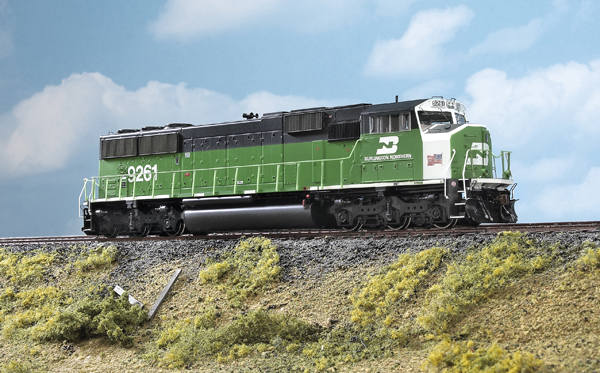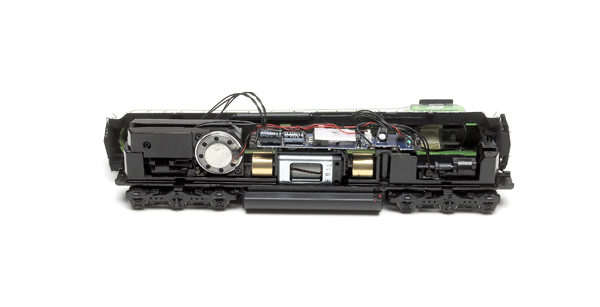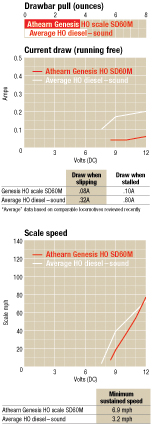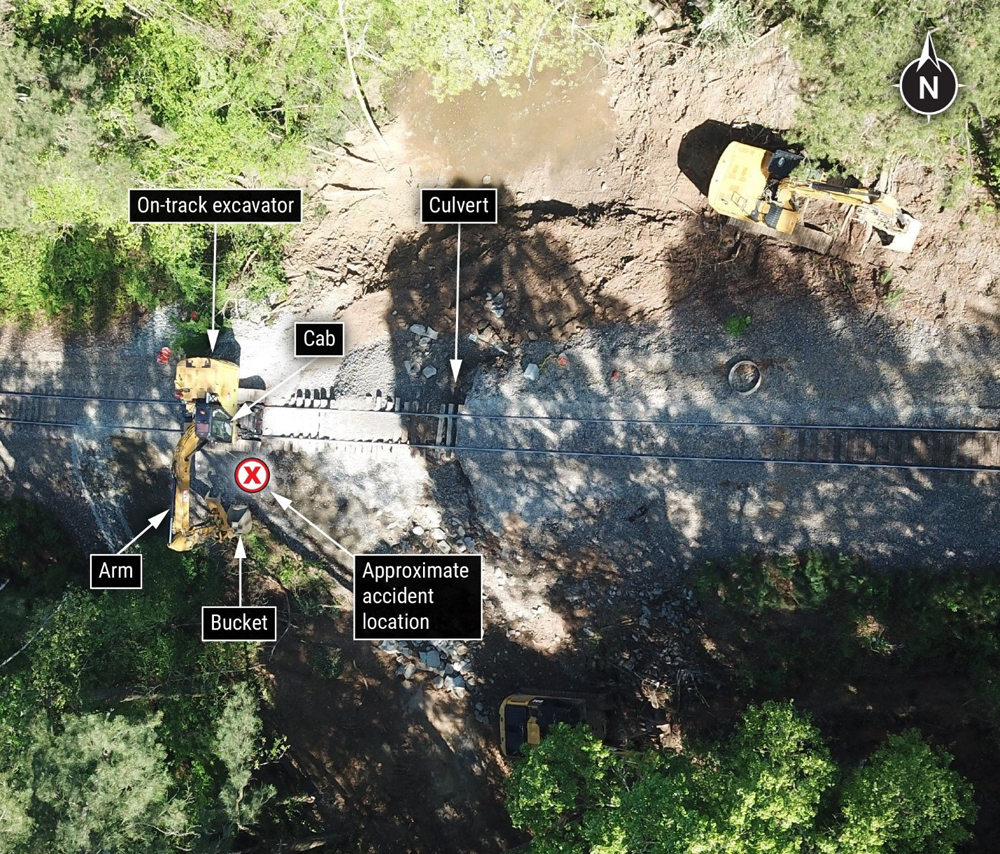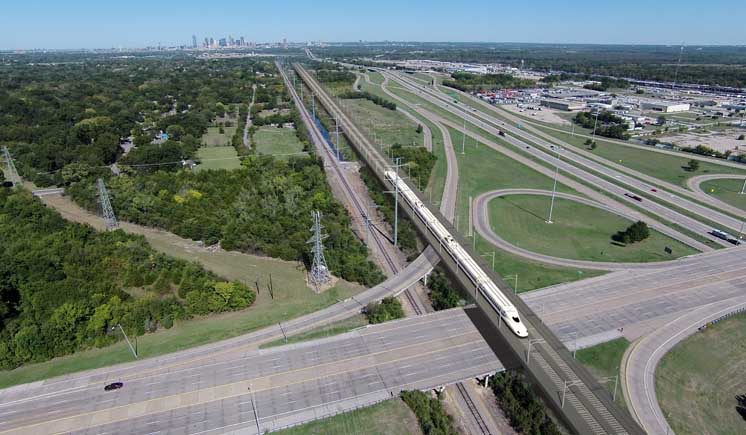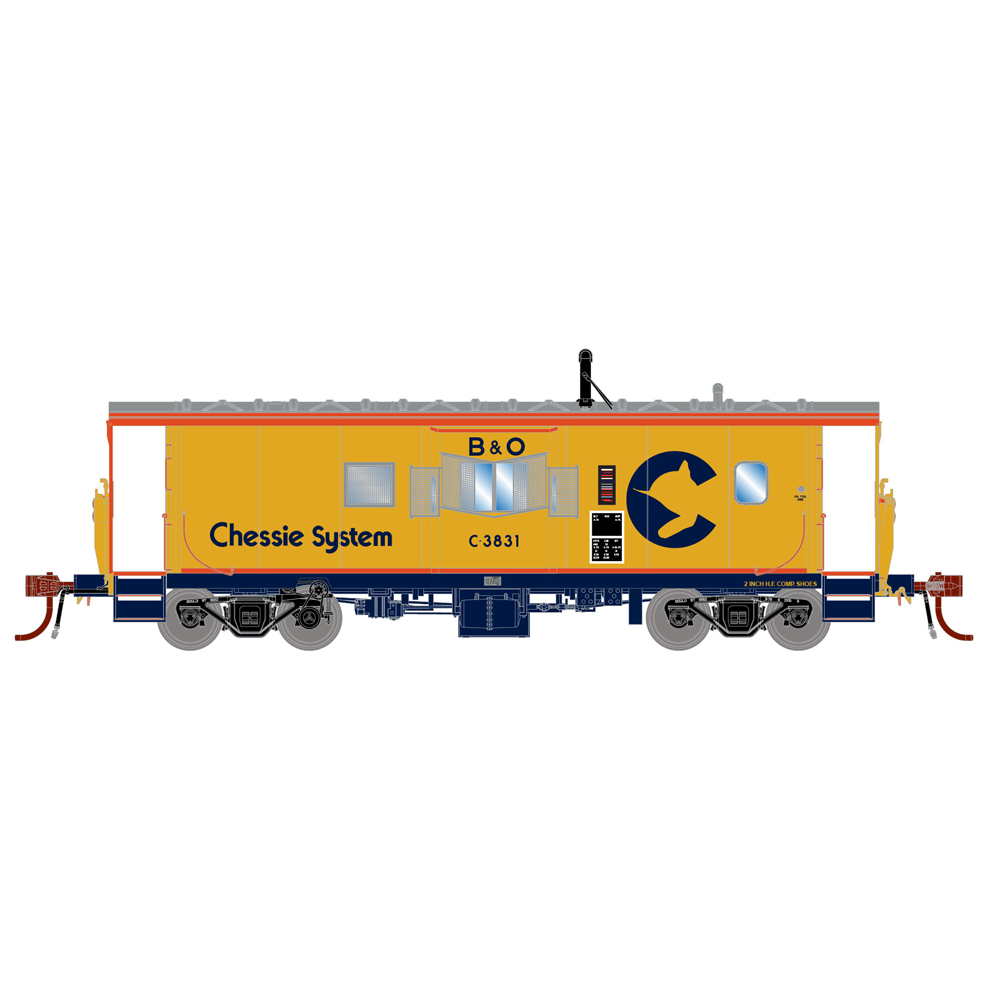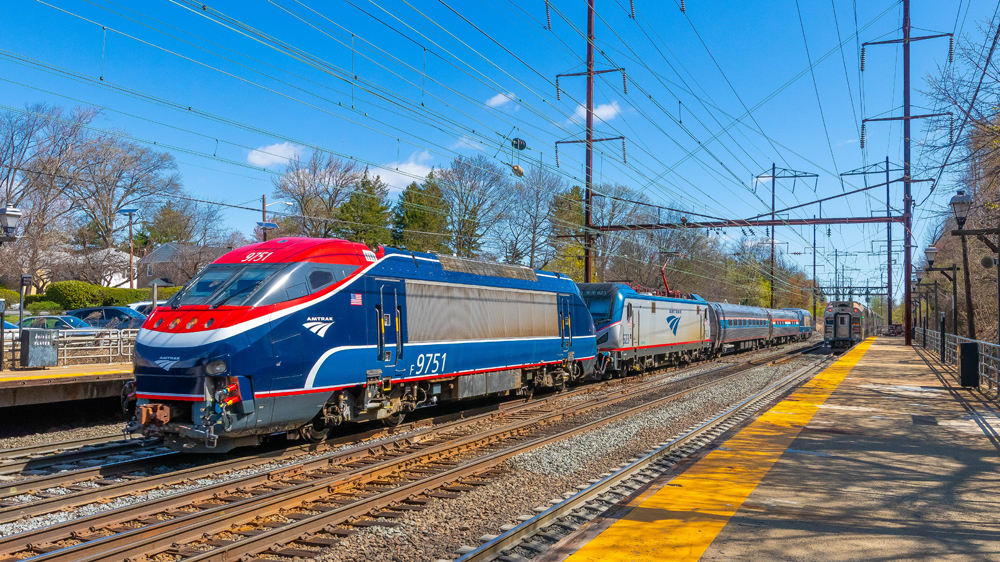History. Burlington Northern’s fleet of 100 SD60M diesel locomotives was built in two groups of 50 between 1989 and 1991. Our sample, BN no. 9261, is based on those produced during the second half of the production run. Railfans and modelers refer to detail differences that took place during production runs as “phases.” These locomotives, known as Phase IIb SD60Ms, have number boxes above the cab windows, two-piece windshields, and tapered noses for better visibility. The Phase Ib SD60Ms are easily recognizable by their three-piece windshield.
A detailed exterior. The model’s dimensions closely match drawings in Robert C. Del Grosso’s book BNSF Railway Company 2006 Locomotive Review and Locomotive Diagrams (Great Northern Pacific Publications, 2006). The distance over the coupler pulling faces is about a scale foot longer, but that’s because model couplers are slightly oversize.
The model has see-through radiator fans, central air intake, and exhaust stack silencer. The model also has an electrical cabinet behind the cab on the brakeman’s side, freestanding uncoupling levers, separately applied windshield wipers, and wire grab irons. Though the locomotive doesn’t have lift rings, there are molded drill-starter points on the roof for those wishing to add them.
The HT-C truck sideframes are crisply molded with separately applied brake cylinders and snubbers. A speed recorder is attached to the front truck on the brakeman’s side.
The Cascade Green and black paint was smooth and evenly applied. Except for a bit of overspray between the green and white on the front of the cab, the color separation lines were crisp. The printing was sharp, and the white heralds, letters, and numbers were opaque. Even the small labels, including FIRE EXTINGUISHER INSIDE and LUBE OIL DIPSTICK INSIDE, were legible under magnification.
The model has an injection-molded plastic 4,500-gallon fuel tank that is secured to the chassis with a single Phillips screw. Burlington Northern SD60Ms have 5,000-gallon tanks, but the difference isn’t that noticeable in HO scale. The tank is well detailed with fuel fillers, sight gauges, and drain and vent pipes.
Inside the cab is a one-piece interior with three seats, two operator consoles, and electrical cabinets on the back wall. The gray injection-molded plastic interior looks great and is clearly visible through the front and side windows.
The speaker is mounted in the radiator section of the long hood. The factory default for the volume is 3 (maximum), which was loud and tinny sounding. A booklet included with the locomotive lists the configuration variables (CVs) for the various sounds.
There are 16 different horn types and 6 different bells to choose from. One odd quirk is that when the horn is activated (both in DC and DCC), the bell also starts to ring. The bell can be activated independent of the horn.
The constant, directional headlights turn on and off gradually. When the horn is activated, the ditch lights flash in an alternating pattern for 10 seconds. A limited number of sound and light effects can be activated in DC using the wireless handheld remote controller included with the model.
Next, I tested the unit with Model Rectifier Corp.’s Prodigy Advance DCC system using 28 speed steps. At step 1, the SD60M moved at a scale 4.2 mph. By step 28, the locomotive was clipping along at 119.9 scale mph.
I also ran the locomotive using 128 speed steps. Control was more precise, especially at lower speeds.
A winner. The Athearn Genesis SD60M is a well-executed model. The shell features excellent tooling with crisp knuckle-buster latch and door hinge detail. The dynamic brake grids and radiator screens are lightly weathered, which is a nice touch. Though the top speed for the model is high in both DC and DCC, the locomotive runs well and is a good puller.
Price: Direct-current $139.98 to $159.98, Digital Command Control with sound $239.98 to $259.98
Manufacturer:
Athearn Trains
1550 Glenn Curtiss St.
Carson, CA 90746
www.athearn.com
Road names: SD60I lettered for Conrail and CSX. SD60M decorated for Burlington Northern (Cascade Green and “Pulling for Freedom” schemes), Burlington Northern Santa Fe (no. 9297 and Heritage II), and Union Pacific. Undecorated versions of both prototypes also available
Blackened metal wheelsets, correctly gauged
Celcon handrails
Detailed fuel tank
Drawbar pull: 3.36 ounces (equivalant to 47 free-rolling HO freight cars on straight and level track)
Five-pole skew-wound motor with dual flywheels
McHenry magnetic knuckle couplers at correct height
Minimum radius: 22″
Railroad-specific details
See-through grills
Weight: 20.7 ounces
Wireless handheld remote controller for operating sound effects on direct-current layouts





